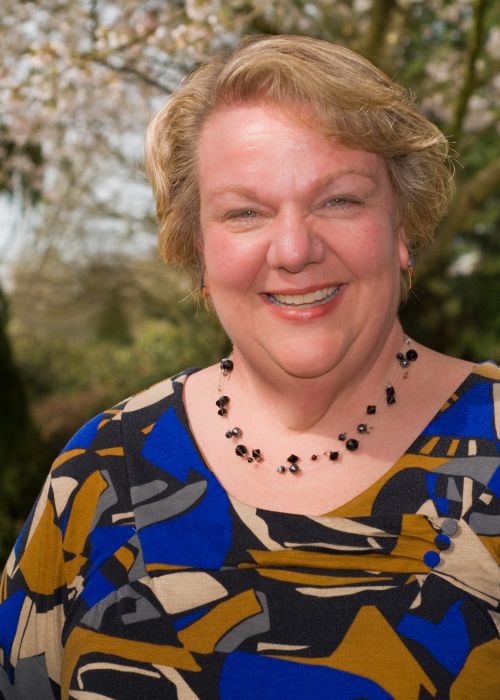Accessible Gospel: Faith Formation During the Lenten Season
Part One: Get to Know the Individual
Easter and the Lenten season are a time to reflect on the sacrificial and redeeming love of Christ. For some individuals, however, this season may be confusing, unimportant, or even scary. How can you help make this a meaningful time of reflection and celebration for all?
The most important place to begin is by getting to know the individual’s strengths and areas of struggle.
Each person — regardless of their level of ability in any given area — is handcrafted by God with gifts and areas of interest, as well as areas where they need the assistance and grace of others.
As you consider this individual, it’s important to ask: What CAN this individual do? When you focus on what the person enjoys, it’s easier to think of the tools, approaches, and opportunities to include in that environment where you can help the person grow closer to Jesus.
The following information is adapted from Accessible Gospel, Inclusive Worship, a book I wrote to help parents, friends, teachers, volunteers, and pastors create an environment where they can introduce the Gospel and foster faith formation in persons with disabilities. I invite you to read this book to find practical ideas, stories, and encouragement that will help you make this important introduction.
Ask these four questions about this member of your church family:
- How does the individual take information in? It’s important to know how people best process information so that we can align our strategies with that person’s best way of taking information in. Some people function well with words. Others prefer pictures or objects. Others may need sign language, Braille or large print.
- How does the individual get information out? Do they use photos? Do they need special equipment? Find out how this person communicates and what ways you can enter that conversation together.
- What movements can the person do? Can he walk or run? Can she operate her wheelchair? Can he sit in a chair on his own? Can she wave a praise streamer? While your friend may have many movements that work well, for those individuals who have limited mobility, find out what tools, equipment, and safety issues impact the individual’s ability to interact with the environment.
- Does he or she have any sensory sensitivities? Does he or she have an over or under-sensitivity to sound or sight? How about balance or smell? Some individuals can have several differences. She might be over-sensitive in one area and under-sensitive in another. Also, think about what tools help regulate that sensation. Is a sound blocker, tinted glasses, or a mini trampoline helpful? Accessible Gospel, Inclusive Worship has a helpful chart that outlines what sensitivities in these areas and more might look like, as well as an explanation of the particular sensory sensitivities.
I encourage you to write down your answers to these questions, and even to discuss and brainstorm with others in this person’s life. As you get to know this individual, think about how you could use this information to foster an environment where they can grow closer to Christ.
Part Two: Accessible Gospel
Now that we have a good understanding of our friend, it’s time to apply that knowledge to create an environment where we can share the good news of Jesus Christ. While the content is important, how we present that content may require some creativity and prayerful consideration. We may first need to learn to speak that individual’s language, to find out that person’s story and what that individual enjoys. Perhaps we need to find that person’s “expert” or “guide” (e.g. parent, caregiver, or close friend) so we can better form a safe and productive relationship. Have we considered creating a “Wrap Around” Team that may include intercessors? Or perhaps purchasing some items that would be well received by that person? Do we know what phrases to avoid with this individual? Particularly around Easter, it’s important to make sure the invitation focuses on the compelling love of Jesus Christ, rather than items that may appear scary to this person (like nails, death, and blood). Though Jesus’ death is crucial to our salvation, it’s important not to scare your friend into following Jesus.
You Try It
Begin with your answers to the questions in Part I above. Focus on the gifts, strengths, and interests of that person.
As you think about their strengths and interests, can you think of a way to use this to make an introduction of the good news of Jesus Christ?
During Lent, would it be meaningful for your friend to have a daily reminder of Jesus’ love? Perhaps this could be a chair in their house draped in a purple cloth? Or an illustration of Jesus welcoming the children? How about a picture they’ve colored? Consider how your friend receives information and combine it with something that meaningfully communicates Christ’s love to them.
Their gifts and joys will often be the activity to house the message. If your friend enjoys baking, then you might make Easter rolls. When you break them open, they are hollow inside. Or try a recipe for a resurrection cake, where each layer and part represents what Jesus has done for us. Turn the baking environment into an introduction to Jesus, or a way to remember what He has done and why we celebrate it.
If this is a child who is talented at playing and running, you might create a fitness course where each station tells a part of the story of God’s love in Jesus Christ. Perhaps this individual enjoys playing board games with you. If that’s a strength, how could you adapt his or her favorite board game to represent the parts of the Gospel message? What if song is one of the ways to engage this person? Is there a favorite tune or hymn you could sing or listen to together that tells of Jesus’ power and love?
Next, focus on the ways your friend takes information in. Do you have notes from Part I about the importance of using pictures or keeping it short due to attention span? Can you use books with words or would you want to use music? How a person takes information in will help you choose the content for the activity. For example, if you are doing the Easter cake baking, should you have a word recipe or picture recipe to describe the Gospel layers of the cake?
As you look at ways your friend gets information out, this will be the way you can check for understanding. For example, if your friend can pull you to a particular place and you are doing the fitness course, you could ask your friend to take you to the place that shows us Jesus is alive. If your friend can point to a picture or object and you are doing a board game, have that person point to someone that Jesus loves in order to move forward four spaces.
As you plan your environment and activity, make sure to factor in movements, sensory sensitivities, safety issues, and equipment needed.
As the activity begins to form in your mind, consider constructing the content so that you can repeat it and review it. Creating something lasting allows you to come back to it and learn from it many times over.
At this point, if nothing comes to mind, ask another individual to brainstorm with you. Remember to cover this process with prayer.
God hand-crafted this individual and knows this person from before birth, and He wants each one to know His love!
Ask Him to highlight a path. Remember, you create the environment for the introduction to Jesus and His love for this individual, and watch God do the rest!
Remember, we are not the one who saves, that’s God’s part. But we are called to set up an environment where we can arrange an introduction. It is our hope at All Belong that these tips and ideas have helped you to think of some ways to help a friend with a disability in your life reflect on and celebrate Christ’s love this Easter and Lenten season.
The material above was adapted from Accessible Gospel, Inclusive Worship.

Barbara J. Newman
Church and School Consultant
Barbara J. Newman (1962-2020) was the Director of Church Services at All Belong. For over 30 years, she endeavored to create communities of inclusion through All Belong. Co-administrating the inclusion program at Zeeland Christian School allowed her to stay on top of best practices which she shared at schools and churches nationwide and in her books and practical resources, including Autism and Your Church, Helping Kids Include Kids with Disabilities, the Inclusion Awareness Kit, Nuts & Bolts of Inclusive Education, and her latest title, Accessible Gospel, Inclusive Worship.
